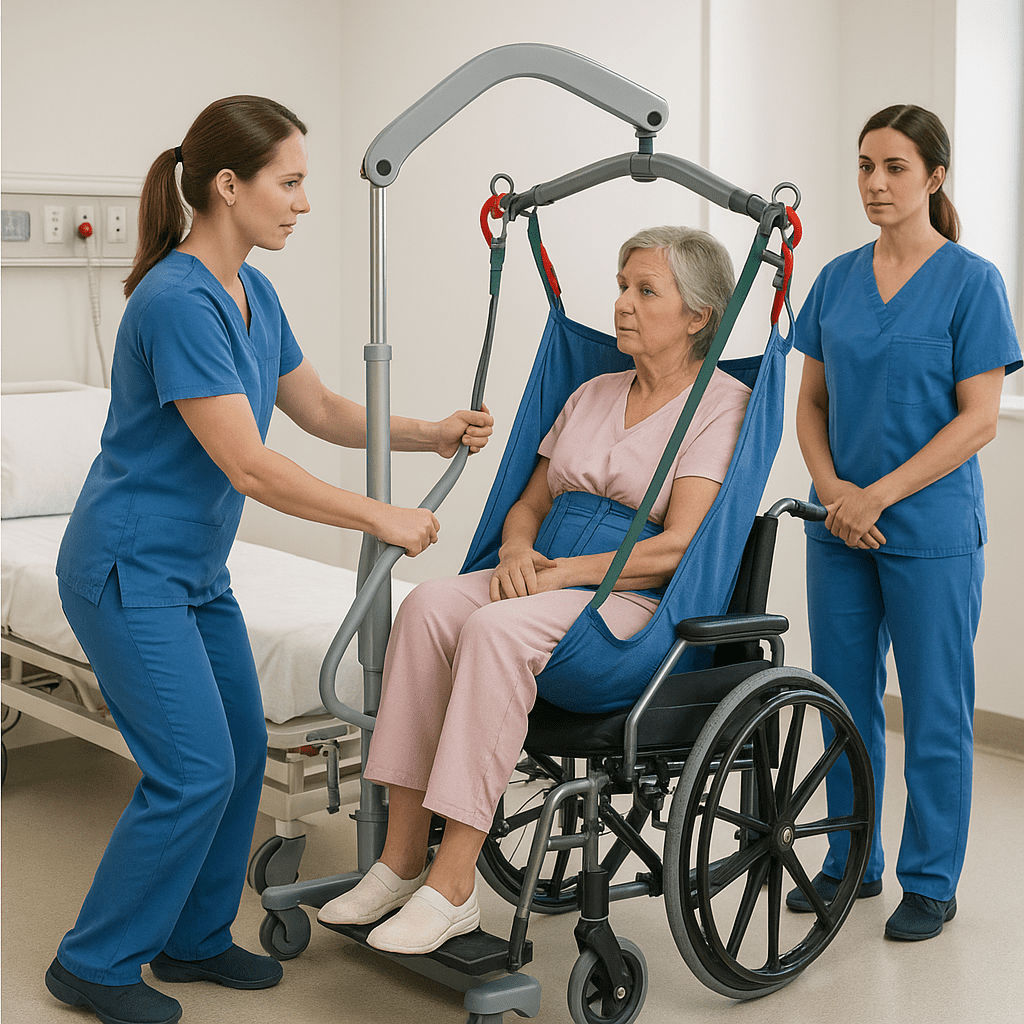Back injuries are one of the most common occupational hazards in the nursing profession. Every registered nurse (RN nurse) faces the challenge of lifting, transferring, or repositioning patients daily — all of which increase the risk of musculoskeletal injuries. Learning safe patient handling techniques is not only crucial for nursing practice but also an important concept tested on the NCLEX and covered in every nursing bundle focused on patient and nurse safety.
💡 Why Safe Patient Handling Matters for Nurses
The physical demands of nursing are immense. Many nurses experience back pain due to improper lifting techniques or a lack of assistive equipment. Over time, these injuries can lead to chronic pain, decreased mobility, or even early retirement from the profession.
For RN nurses, preventing back injuries is a matter of both self-care and professional responsibility. When nurses are injured, patient care quality suffers too. The NCLEX emphasizes safe patient handling under the Safety and Infection Control and Basic Care and Comfort categories — reinforcing how essential this knowledge is for every nursing student and registered nurse.
⚙️ Principles of Safe Patient Handling
1. Assess the Situation
Before lifting or moving a patient, assess:
- The patient’s weight and mobility level
- The number of staff needed
- Available assistive devices (slide sheets, gait belts, mechanical lifts)
Never lift a patient alone if you’re unsure of your ability. Asking for help is a mark of smart nursing, not weakness.
2. Use Proper Body Mechanics
Every nurse must protect their spine by maintaining correct body alignment:
- Stand close to the patient.
- Keep feet shoulder-width apart for balance.
- Bend your knees, not your back.
- Avoid twisting your torso while lifting.
- Tighten your abdominal muscles for core support.
These are foundational nursing tips included in most nursing bundles and classroom skills checklists.
3. Leverage Assistive Devices
Modern nursing practice emphasizes no-lift policies where possible. Equipment that supports safe transfers includes:
- Mechanical lifts for immobile patients
- Slide sheets for bed repositioning
- Transfer belts for ambulation
- Adjustable beds and wheelchairs to maintain ergonomic posture
These tools help RN nurses reduce physical strain and prevent long-term injury.
4. Communicate and Coordinate
When performing patient transfers as a team, communication is key. Use clear, consistent cues like:
👉 “On three, we move.”
This ensures synchronized movement and minimizes sudden weight shifts that can injure both the nurse and the patient.
5. Take Care of Your Own Body
A healthy registered nurse can provide better care. To prevent injury:
- Stretch before and after shifts.
- Maintain a healthy core through regular exercise.
- Use proper footwear with good arch support.
- Report pain or strain early — don’t ignore it.
Preventing injury is part of professional nursing accountability and supports longevity in your career.
🧠 NCLEX Tip: Safety Always Comes First
On the NCLEX, you may see questions like:
“A nurse is about to transfer a heavy patient from bed to chair. What action is most appropriate?”
The correct answer often involves using mechanical aids or asking for assistance, not lifting manually.
Remember: Safe nursing = smart nursing.
🧾 The Nursing Bundle Advantage
If you’re reviewing for the NCLEX, the Fundamentals of Nursing Bundle 2025 or Medical-Surgical Nursing Bundle are excellent resources. They include:
- Body mechanics illustrations
- Safe patient transfer checklists
- NCLEX-style questions on nurse safety
These nursing bundles are designed to help both student nurses and RN nurses practice confidently and safely.
❤️ Final Thoughts
Safe patient handling is more than a skill — it’s a nursing mindset that protects both patients and caregivers. By applying correct lifting techniques, using assistive devices, and staying aware of your body mechanics, you’re safeguarding your health and ensuring long-term success as a registered nurse.
Whether you’re studying for the NCLEX or already working on the hospital floor, remember: your safety is part of patient safety.
🧠 FAQs – Safe Patient Handling for Nurses
Safe patient handling refers to the use of proper body mechanics, teamwork, and assistive devices (like mechanical lifts or slide sheets) to move or transfer patients safely. It protects both the nurse and the patient from injuries. Every registered nurse (RN nurse) should follow these techniques to prevent back strain and ensure safe clinical practice.
Safe patient handling is essential because nurses are at high risk for musculoskeletal and back injuries due to frequent lifting, repositioning, and transferring of patients. By using correct methods and tools, RN nurses can reduce workplace injuries and provide higher-quality, safer care — a topic often emphasized in nursing bundles and the NCLEX exam.
Common assistive devices include:
Mechanical lifts (e.g., Hoyer lifts)
Slide sheets for repositioning in bed
Transfer belts for safe ambulation
Adjustable beds and wheelchairs
Using these devices is part of evidence-based nursing practice and improves both safety and efficiency for registered nurses.
To prevent back injuries, nurses should:
Keep the back straight and bend at the knees.
Use the legs, not the back, for lifting.
Keep the patient close to the body.
Avoid twisting during transfers.
Ask for help when needed and use mechanical aids.
These practices are a core part of nursing fundamentals taught in every nursing bundle and clinical training program.
If an RN nurse feels pain or strain after lifting or transferring a patient, they should:
Stop and rest immediately.
Report the incident to their supervisor.
Apply ice or heat depending on the injury.
Follow up with occupational health.
Early intervention prevents chronic back problems and ensures long-term nursing career safety.

